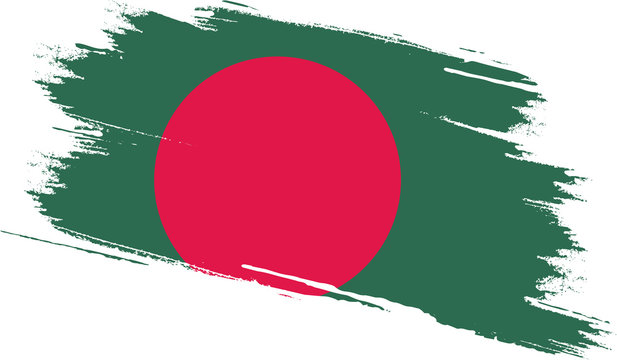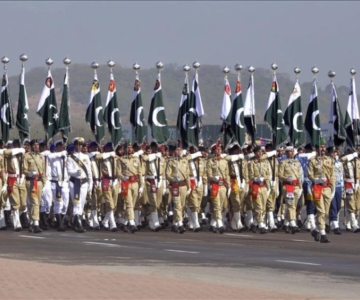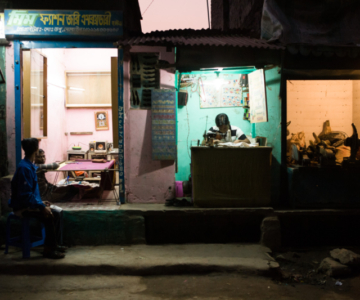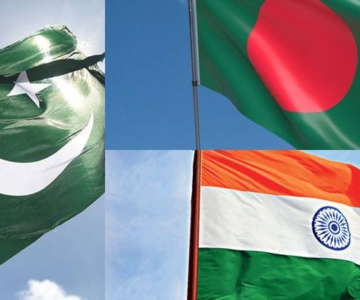A Pakistani re-discovers Bangladesh.
As a Pakistani, there is a part of you that reacts instantly to the word Bangladesh: guilt, remorse or, in some cases, nostalgia can suddenly take over. I am from the generation that was spared the horrors of Pakistan Army actions, of information blackouts on the massacre of Bengalis in the name of Pakistani nationalism. But what does it mean to be half a Pakistani, without East Bengal especially when you know a bit of history and have managed to see through the falsities of the textbooks? It means nothing or it means a lot; it depends on which way you want to look at the other half, now a proud, vibrant country.
Working in international development is what took me to Bangladesh for the first time, nearly five years ago. Prior to that, I had been familiar with the country’s mythical music, rich poetry and tales of its golden sunsets and singing rivers, but had never touched its soil. Bengal’s magic is embedded in the Subcontinental imagination, and these images and literary references long shaped my view of the country. However, my romantic notions were severely jolted when I arrived in Dhaka – at first glance, an overcrowded concrete jungle typically lacking in urban planning. More of the same, I concluded: big cities, despite their buzz, can let you down.
Still, my disappointment did not last, as I soon undertook to seek out the city’s various corners, its hidden spaces of beauty and comfort; above all, what I found was an engaged citizenry marching on. Discovering the University of Dhaka and its surroundings came as a much-needed connection, though older parts of Dhaka are also quite mesmerising. The gulmohar (or krishnachura) trees, almost on fire, greet a visitor on nearly every street, as does a tremendous volume of rickshaws.
Then there is the Shaheed Minar, the monument marking Bengali resistance founded on linguistic identity. The physical monument is modern, and by itself is not particularly exciting. However, its significance is truly monumental, marking as it does Bengali nationalism from 1948 to 1971 under the misrule of West Pakistan elites. Given movements for ethnic, linguistic and provincial identities ongoing in today’s Pakistan, the Shaheed Minar is a powerful reminder of how centralised rule and marginalisation of cultural identities lead to festering problems.
A colleague who took me to see these sites was most polite with me. He was fervently nationalistic but chose his words carefully, at least until I asked him to drop the formalities and just say what he wanted. Then the floodgates opened, and out came his personal memories and renditions from Bengali oral histories. I even found myself apologising, though I then laughed at myself for such a delusional gesture. My few words of apology meant nothing against the horrors of Bengali suffering. Luckily, the charms of the place and the krishnachura trees came to my rescue. And so, I brushed the dark side of our shared histories under the proverbial carpet, just the way that Pakistan has done. For many people in Pakistan, 1971 is today an invisible event, a deliberately ignored footnote in our collective memory, despite being one that should remain understood as a moment of reckoning for the entire country. After all, majority provinces seldom secede; it is usually the other way around.
Our Iqbal
Another day I spotted the majestic colonial building known as Curzon Hall, an architectural gem. This time I was on my own, daring to explore the city on a Sunday when some time was available. A student near the hall was curious to know who I was, and immediately took it upon himself to be my guide, host and friend. Curzon Hall is also a part of the university and has adjoining hostels where my new friend, Shaheen, lived.
Named after the former viceroy of India, Curzon Hall was renamed Iqbal Hall under Pakistani rule. Muhammad Iqbal is Pakistan’s national poet, regarded as the one who first dreamed of Pakistan. In his famous Allahabad address of 1930, Iqbal mentioned the need for local autonomy, which the state of Pakistan and its loyal historians subsequently interpreted as a demand for Pakistan. In fact, the poet is on record saying, immediately after his address, that he never asked for a separate country. Iqbal died in 1938, nine years before the creation of Pakistan. So the links are at best tenuous, but of course nation states have to create heroes and histories.
Still, the real irony surrounding Iqbal is that his famous tarana (anthem) is India’s unofficial national anthem, which begins with the mellifluous lines:
Sare jahan se acha hindustan hamara
Ham bul-bulen hain is ki ye gulistan hamara
Our Hindustan is better than the entire world
We are the nightingales and this is our garden
In 1971, of course, Iqbal Hall had to go (renamed again as Curzon Hall), as did several other reminders of the immediate past. Our Iqbal composed poetry in Persian and Urdu, and the latter’s imposition by West Pakistan had been a perennial source of conflict. Earlier, at the Shaheed Minar, I had also remembered Muhammad Ali Jinnah and his controversial speech of 1948, in which he pronounced Urdu the state language. That speech was delivered right here in Dhaka, at Curzon Hall, and Jinnah had said, “There can be only one state language if the component parts of this state are to march forward in unison, and that language, in my opinion, can only be Urdu”. Jinnah died in September 1948 and if he had known that his remarks were going to spark such a controversy, he might well have changed his mind.
It is only by travelling in the interior that one realises the deep love that Bengalis have for their language and culture. Bangla is rich, and the 18th-century renaissance developed strong traditions of poetic and literary expression culminating in the emergence of Rabindranath Tagore in the late 19th century. Bengali folk art, its folk songs and tales are all part of the lived culture. Yet the state of Pakistan took Jinnah’s words on language a bit too seriously. Muslim, Islam, Urdu and a linear view of Pakistan became the key divider between the two wings. The religious right continuously undertook propaganda against the inherently secular and plural culture of East Pakistanis. Bengali women wore bindis regardless of their religion, and all Bengalis, irrespective of their faith or creed, love and worship Tagore, who was not a Muslim.
These cultural differences were apparent despite the commonalities. Today, these differences remain, again despite the commonalities such as dynastic politics, corruption, use of religion as a political card and the chaotic governance. When I visited Dhaka, Bangladesh was also ruled by a technocratic and army-backed regime, and was professing to clean up the country of corrupt politicians and officials. This was hauntingly similar to what General Pervez Musharraf had likewise announced and attempted to undertake.
Technocrats were being called clean in both the countries; there was a high profile Anti Corruption Commission in Bangladesh and a high-powered National Accountability Bureau in Pakistan. But military men were heading both institutions! In due course, the caretaker government of Bangladesh gave way to a return of democracy, where one of the dynastic politicians went back into power and another into opposition. Gen Musharraf also had to give up power in 2008 when he resigned, handing over power to the very politicians he had tried to oust.
Still, the commonalities ended here, jammed in the technical details. Bengalis are not known for their patience with authoritarian rule. Pakistanis on the other hand have learned to live with long spells of army rule. Many say that this has now changed, that it would be difficult for any future coup to sustain. Of course, only time will tell.
Old model
One of the more stunning sights in Dhaka takes place each evening, when the garment factories shut down and long lines of women workers leave for home. At that time, the major roads suddenly become buried under energy and colour, with tens of thousands of women dressed in saris and shalwar kameez. It is a surreal sight indeed, and highlights a palpable difference between Bangladesh and Pakistan. In Dhaka, women appear to be far more mobile and, apparently, safe in the urban jungle. To my eyes, such visibility in the public sphere was a great slap to the Islamists who want women to be veiled and, ideally, locked in their homes.
In 2010, jute-producing Bangladesh exported garments worth USD 12 billion, leaving the cotton-producing Pakistan far behind. Bangladesh has also made great progress in terms of population planning, while higher levels of literacy and secondary education for women have brought down the fertility rates by half in the past two decades. Pakistan, the former compatriot, has yet to make a noticeable advance in this area.
Being a Pakistani visitor in Bangladesh invites much curiosity. Most people I met had a story to relate: many had parents or grandparents who had lived in (West) Pakistan. Thanks to Bollywood and Indian soaps, Hindi/Urdu is widely understood, especially by the young population. And so Bollywood helps the young Bangladeshi understand me, a Pakistani. This is the irony I pointed out to my friend, Nazrul, a lawyer and academic, who laughed in response. His wife, Prachee, is a well-known actor who has received several awards for her performances in off-beat cinema productions.
Nazrul insisted that I visited Old Dhaka, where the influence of the nawabs of old and their hybrid culture continues to survive. The best biryani is available in this area. Developed by the Mughals, the area has typical features for anyone familiar with Lahore or Delhi, albeit on a smaller scale. Nazrul wanted me to taste something familiar, but my real discovery was the Bangla cuisine. I ate the best fish from the iconic hilsa to the regular pomfret. However, such is the beauty of the language that even fish have most romantic names: pomfret, for instance, is roop chada (moon-faced). Bengali sweets are also notably subtle and light, not dripping with oil shondesh, roshogolla and chomchom are, in my opinion, superior Bengali cousins of what we prepare in Pakistan (or the western parts of North India).
In Chittagong and Kushtia (a rural district), the cuisine got even better. The fish varieties grew in number and I tasted the most delightful sweets, either at people’s homes or in small eateries where Hindi and Bangla songs keep diners entertained. In fact, it was during travels in the countryside that I finally met my constructed image of the verdant Bengal. The rice fields, the numerous rivers and lush green fields are breathtakingly beautiful. In the villages are ponds where men and children bathe, and narrow dirt roads snake through the jungle and fields. The infrastructure is not as developed as, say, in Punjab province, and the major highways are narrow and can be quite frightening due to heavy traffic.
But in this populous country, one cannot help but notice the dynamism. The economy has grown by six percent annually over recent years, and a huge private sector keeps the country moving despite the inefficiencies of the public sector. Akbar Zaidi, Pakistan’s accomplished economist, has observed that Bangladesh was considered to be a basket case in 1971, [but] is today offering a mirror to others on how developing countries can become a development state.
Those many encounters
I did not feel foreign enough, and will be back. The Bengalis struggled for the country where I live. In fact, Zaidi himself recently published an article that stated, In many ironic ways, it is Bangladesh which has become Jinnah’s Pakistan – “democratic, developmental, liberal, secular” while Pakistan has become his worst nightmare – “intolerant, authoritarian, illiberal and fundamentalist”.
An action by the Supreme Court of Bangladesh had revered the country to being a secular republic. In addition, radical Islamist literature has been banned, while in Pakistan there is an exponential growth in the influence of the fundamentalists. Thus, for me travels to Bangladesh evoke thoughts of lost opportunities, of war, violence and separation.
I am not a fan of partitions, but Bangladesh feels as though it was meant to be. However, this should not preclude the two countries reviving and strengthening their trade and cultural ties. It is a true pity that Pakistan’s elites are yet to properly apologise to the state and people of Bangladesh.
All I have experienced, meanwhile, is hospitality, warmth and generosity of spirit, and minimal bitterness. The Pakistani cricket team is much appreciated in Bangladesh; Atif Aslam, our pop idol, is a huge favourite of the youth; and Pakistan is no longer an entity to resent, even as the memories of 1971 are kept alive. There must be many roads that can help us reset the trajectory of the last four decades, and to heal the wounds.
After those many encounters, that easy intimacy, we are strangers now
After how many meetings will we be that close again?
-Faiz Ahmed Faiz, translated by Agha Shahid Ali
Raza Rumi is a contributing editor to this magazine.



